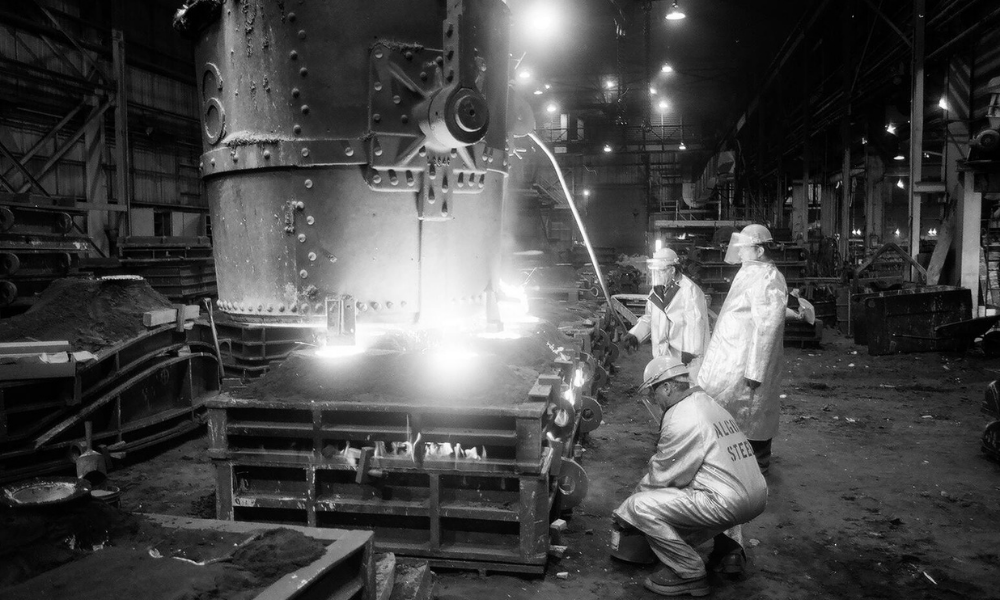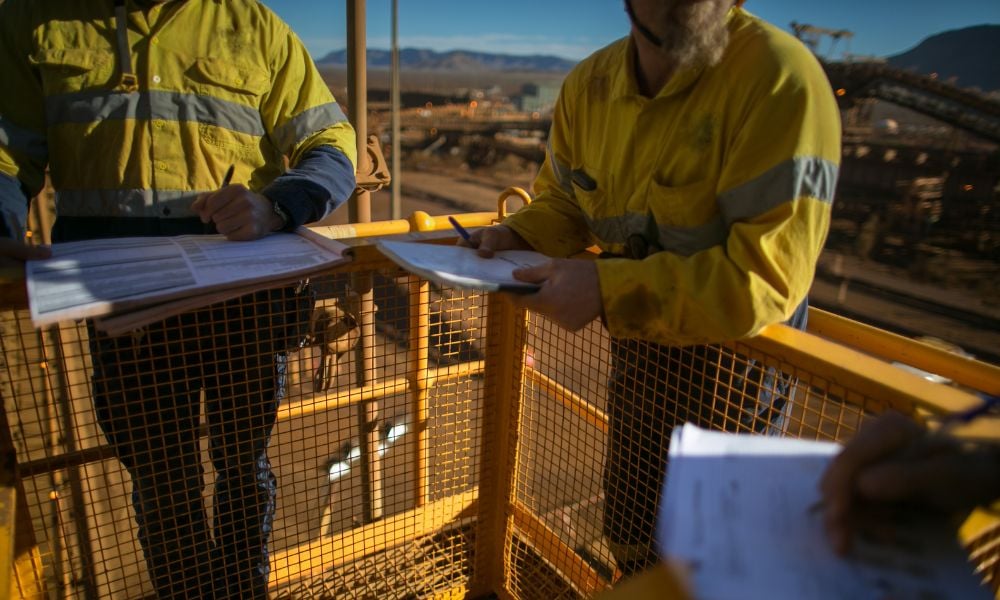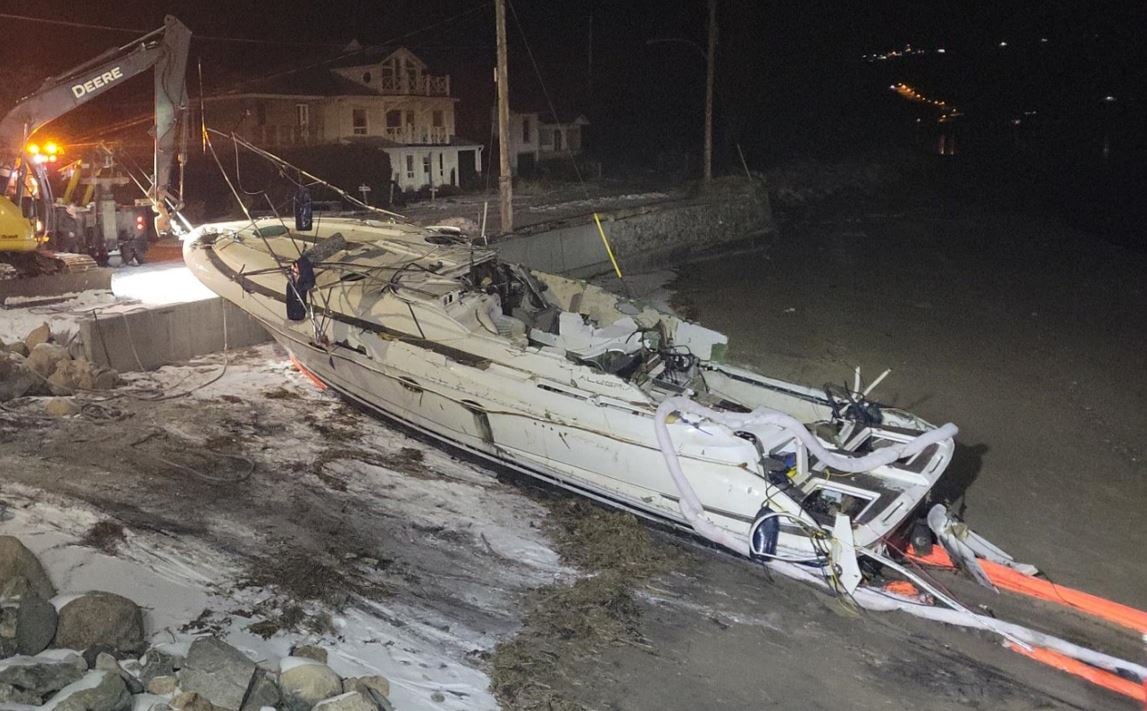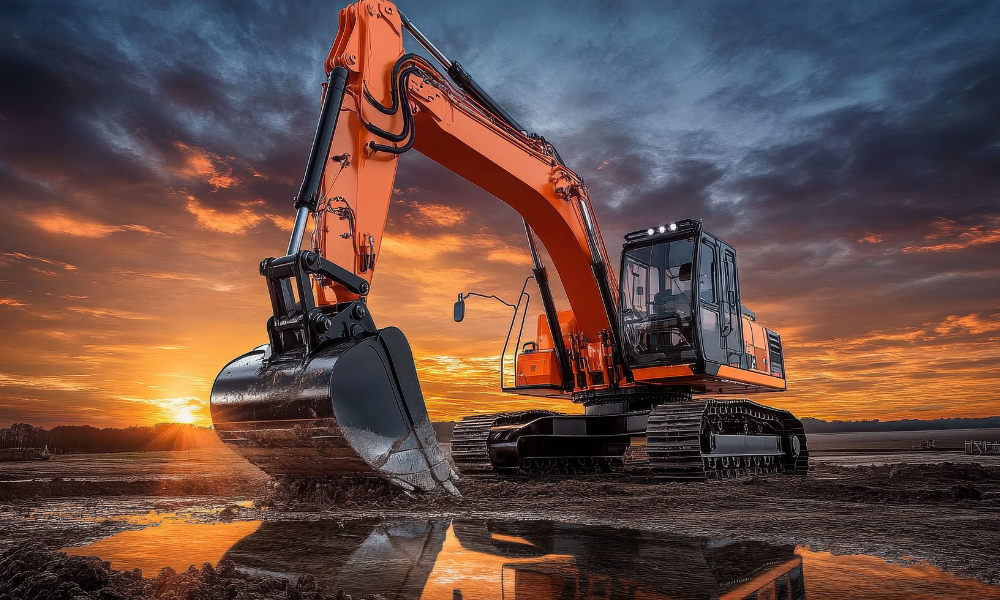Occupational exposure series: Workers at steel mill in Sault Ste Marie were exposed to large number of toxic substances

For workers in certain industries, occupational disease seem to be an unfortunate reality. Looking at the sheer numbers of workers affected, it’s almost par for the course.
Clusters of workers around Ontario are suffering the effects of decades of exposure to toxic substances. Steel Mill workers in Sault Ste Marie, and workers at the Ore Mine in Wawa, ON, started filing WSIB claims in the mid-2000s.
Up until then, workers were filing claims on their own.
“The company wasn’t reporting to the union that these claims were being filed with the WSIB,” says Adam Guizzetti of United Steel Workers (USW) Local 2251. Guizzetti has been a WSIB worker rep for the last three years.
Once the Local found out, the committee spearheaded an occupational disease intake clinic in May 2008, which took place at Algoma University in Sault Ste Marie. The clinic at Algoma lasted for two days. An additional clinic was also hosted for a day in Wawa.
Around 568 people attended the Algoma clinic, and around 100 went to Wawa.
“Because of the response to the two-day clinic, lots of people started calling up wanting to come in and file claims. And so we held monthly intake clinics in the old union hall when the offices were still located. And it grew from there, and unfortunately it’s still growing because we’re still getting people newly diagnosed,” says Andy LaDouceur. He has been on the WSIB committee since 2007 and was initially brought in when the committee was planning the occupational disease intake clinic.
Claims denied
The steel mill in Sault Ste Marie opened in the early 1900s.
Being such a large facility with a number of different plants, there was a wide array of chemicals that workers were exposed to: respirable dust, asbestos, different benzenes – “you name it,” says Guizzetti. There were a lot of different chemicals floating around for people to be affected by.
One of the main areas linked to many of the current cancers in the cluster is the coke ovens – the WSIB recognizes the relationship between coke ovens and lung cancer, for which they have a specific policy.
Workers in the cluster have been diagnosed with a range of illnesses and diseases: COPD, blastomycosis, Hodgkin’s and non-Hodgkins lymphoma, dermatitis, kidney failure, kidney stones, liver failure, mercury poisoning, mesothelioma, etc.
Guizzetti says that in total there have been around 1,300 claims made.
On its website, Local 2251 says that as of March 25, 2021, 326 claims have been allowed by the WSIB and around 977 have been denied (the majority of which are being appealed).
The cluster has recently joined the Occupational Disease Reform Alliance (ODRA), an advocacy group which says that it is calling on the Ford government to fix what they describe as a “broken” compensation system.
WSIB policies
LaDouceur says that there are different variables around why claims are denied – some illnesses are recognized by the WSIB and others are not, for example. And some policies have also evolved. He highlights policy 16-02-11: Gastro-Intestinal Cancer-Asbestos Exposure:
“We were winning GI cancers for asbestos exposures [claims]. And then the WSIB got some scientists to review the policy, and they called it the interpretation of policy 16-02-11, which is the interpretation of GI cancer due asbestos exposure. After they came out with that paper, our wins plummeted on GI cancers due to asbestos exposure,” he says.
This was around May 2009.
“What happened was the WSIB had put our claims on hold while they were doing that review – so they were delaying justice before they denied justice,” says LaDouceur.
“But the other part of that story is that we’ve had some of those [GI claims] successfully allowed at the tribunal. Because the tribunal says that the policy is still valid [and] it should be applied,” he says. “In my view, the WSIB has been ignoring their own policy.”
This, among other examples, is evidence that the WSIB takes a restrictive view or narrow interpretation of policies, he says. In addition, he says that in his experience over the last few years the WSIB seems to be denying more claims.
LaDouceur says that another issue that the reps have been dealing with is the WSIB’s “paper doctors.” This, he says, is where the WSIB will use their doctors in an office to review a claim file – but these doctors are only looking through documentation and have never actually seen the patient – “they haven’t physically treated anybody, they’re just looking at the notes from other doctors that have treated people.”
Multiple exposures
Another issue which needs to be addressed is the cumulative effect of multiple exposures:
“Some WSIB adjudicators take those multiple exposures from non-occupational sources and occupational sources,” says Richard Beall, who has been a WSIB worker rep for three years. “And there are times where the non-occupational exposures through lifestyle and habits seem to trump what may have been in workplace. And that’s not necessarily how the process is supposed to work.”
A report authored by Dr. Paul Demers in 2020 in part looked at the effects of multiple exposures. This report was commissioned by the Ontario Ministry of Labour, Training, and Skills Development in 2019.
But the scientific principles used in the report seem to largely be missing from the hundreds, if not thousands of WSIB decisions that we’ve seen, says LaDouceur.
“That is certainly why we do support ODRA’s call to look at those multiple exposures – and look at the fact that even if [an exposure] is below the threshold, that is not necessary that you won’t get sick, or that it is a safe level. Especially when you look at everything combined,” he says.
More broadly, advocates we have spoken to for this series say that there is too much focus on science, and not enough of a focus on the question of law which is: is this person entitled to compensation? And while policies and thresholds are determined by medicine and scientific proof, could the burden of scientific proof placed on workers filing claims be too high?
In the same vein, to rely heavily on science also means investing in scientific research to investigate links between toxic exposures and occupational diseases. If there is a lack of scientific evidence, this does not mean that evidence is lacking but rather research is.
“We’re arguing that the WSIB is looking for scientific certainty,” says LaDouceur. “The WSIB says that they are not. But if you look at the definitions that they use when they’re grading their scientific evidence – and the fact that adjudicators apply those scientific conclusions directly to a question of law – they are holding it to a much higher standard. They are holding it to the standard of scientific certainty despite anything they say to the contrary.”
The claims process can be a long an arduous one, with appeals to initial decisions taking potentially years to come to fruition:
“I think, at the end of the day, too many people are suffering,” says Beall. “And it’s taken far too long for some of these claim files to be appealed because the WSIB has denied so many.”
WSIB response
COS approached the WSIB for a response to this article. It sent the following statement:
"The WSIB is here to help and wants everyone to receive the benefits and services they are entitled to. When we look at any claim, we have to rely on the best scientific evidence available as well as information about all of the person’s illnesses, workplace exposures and other relevant factors. Determining if a person’s disease is work-related isn’t about scientific certainty. All of the available evidence, including existing scientific evidence, is taken into account to determine whether the person’s employment led to the development of the disease. In some cases, evidence linking a person’s workplace exposures to the development of a disease does not exist.
"We make decisions with the best information we have available to us at the time. We apply policies and schedules where they exist but make case by case decisions where they don’t. As the scientific research related to occupational disease evolves, we continue to look for new information that may help with our evidence-based decision-making. To help with this, one of the main areas of focus of our Occupational Disease strategy is to leverage our Research and Grants Program to ensure the collection of up-to-date scientific evidence to support evidence-based decision-making. New occupational disease research is currently underway and includes a systematic review of occupational asbestos exposure and gastrointestinal cancers. This is something we know people have questions about. We also have questions and look forward to getting independent research that provides a better understanding of the issue.
"The Demers report includes recommendations for both the WSIB and the MLTSD. While the review did not specifically pertain to the WSIB’s adjudication process or individual claims, its recommendations have helped to inform the basis of our Occupational Disease strategy. Once we have implemented the Strategy’s foundational pieces, we plan to look more closely at the recommendation surrounding multiple exposures when determining work-relatedness. However, assessing the impact of multiple exposures on the risk of developing a work-related disease is already part of the WSIB’s practice when adjudicating claims."
This is the eleventh and last part of our series on occupational exposures.
Here are the first (miners exposed to aluminium dust), second (exposures at GE plant in Peterborough), third (exposures at Neelon Casting), fourth (Pebra/Ventra Plastics exposures), fifth (interview with Dr. Paul Demers), sixth (WSIB criticism), seventh (WSIB response), eighth (mill worker exposures), ninth (rubber workers), and 10th (Chemical Valley) parts of the series.





